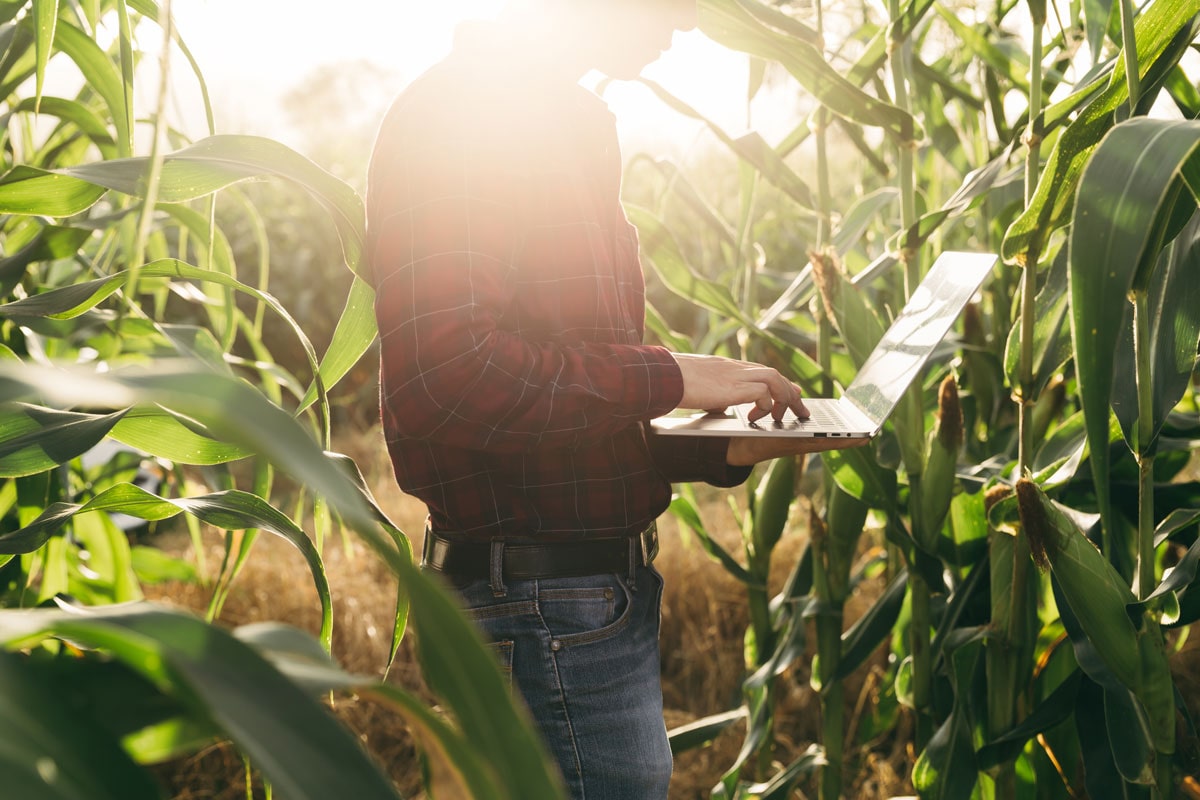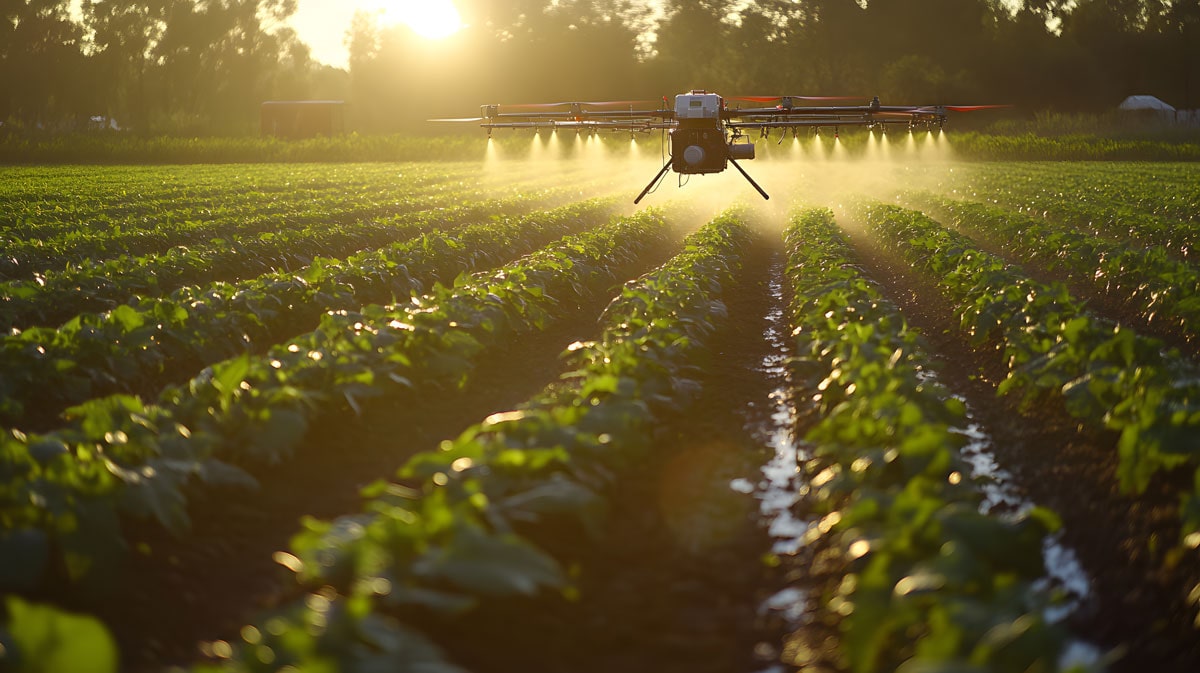Did you know that agriculture accounts for nearly 70% of global freshwater use and is a significant contributor to greenhouse gas emissions? As climate change intensifies, the need for sustainable farming practices has never been more critical. You may be seeking ways to improve your agricultural operations while minimising environmental impact.
Green loans offer a viable solution, providing the necessary funding for climate-resilient yields and eco-friendly equipment. At EMBank, we understand the unique challenges you face in the agricultural sector and are committed to supporting your efforts towards sustainability. By leveraging our expertise in financing, we can help you access the resources needed to transform your farming practices.
Let’s explore how green loans can enable your agricultural business to thrive in a changing climate while contributing to a greener future.
Overview of Green Loans for Agriculture
Green loans target environmentally sustainable agricultural practices, providing financial support for climate-resilient operations. These loans facilitate investments in eco-friendly techniques and efficient agricultural equipment.
Definition and Purpose
Green loans specifically cater to farmers who wish to implement sustainable practices. Designed to fund initiatives such as renewable energy projects, water conservation systems, and organic farming, these loans differ from traditional financing. By focusing on sustainability, they aim to reduce agriculture’s carbon footprint and promote resource efficiency. The purpose of green loans extends beyond immediate financial assistance; they align agricultural practises with environmental goals. This approach supports the cultivation of climate-resilient crops and boosts productivity while protecting ecosystems. You’re encouraged to consider these loans for projects that improve soil health and water quality.
Importance in Climate Endurance
Climate endurance in agriculture involves adapting to ongoing climate changes and mitigating their impact. Adopting sustainable practices can significantly improve the viability of agricultural operations. Green loans provide the necessary funding to implement these practices, such as drought-resistant crops or advanced irrigation systems. Investing in such improvements leads to increased resource efficiency, which is crucial as climate change exacerbates weather variability.
Moreover, these loans often facilitate access to innovative technologies that reduce reliance on chemical inputs and improve ecosystems. By securing green loans, you position your agricultural operations to withstand extreme weather conditions. Case studies show that farmers utilising these loans have experienced increased yields and reduced costs through sustainable methods. Embracing green loans ultimately contributes to long-term food security and environmental stewardship within the agricultural sector.
Types of Green Loans Available
Green loans offer vital financial support for agricultural initiatives focused on sustainability. These loans facilitate investments in climate-resilient practices and equipment, allowing farmers to adopt environmentally friendly methods.
Government Initiatives
A range of government initiatives provides green loan options tailored for agricultural operations. Notably, the UK Government’s Green Finance Strategy aims to aid rural businesses in adopting sustainable practices. This strategy underscores the significance of British agriculture in promoting environmental conservation. Additionally, the Clean Growth Financing Initiative (CGFI), offered by the Agricultural Mortgage Corporation, presents discounted loans without arrangement fees. These financial packages support projects involving low-carbon machinery and renewable energy infrastructure.
In the United States, several governmental organisations, such as the Small Business Administration (SBA) and the U.S. Department of Agriculture (USDA), provide various forms of financial assistance. These programmes encourage projects that align with environmental objectives and support agricultural sustainability.
Private Sector Solutions
Private sector solutions also play a crucial role in financing green initiatives in agriculture. For instance, energy efficiency and renewable energy projects can be financed through green loans, enabling investments in technologies like solar panels and waste-to-energy plants. Such investments significantly lower operational costs and reduce carbon footprints.
Another option includes flexible direct lending from providers like Rural Asset Finance, allowing customised financing solutions for agricultural enterprises. These loans often combine multiple funding sources to maximise support for sustainable investments. By leveraging both government and private sector resources, farmers can effectively implement eco-friendly agricultural practices, ensuring their operations remain resilient against climate challenges.
Benefits of Green Loans for Farmers
Green loans provide substantial advantages for farmers aiming to improve climate endurance and adopt sustainable agricultural practices.
Financial Advantages
Green loans deliver several financial benefits. They help you invest in energy-efficient technologies and renewable energy sources, such as solar panels and waste-to-energy systems, resulting in reduced energy costs. This kind of investment significantly contributes to long-term savings.
Discounted interest rates improve the financial appeal of these loans. Many financial institutions, including Barclays, offer lower interest rates to assist farmers in transitioning to environmentally friendly practices. Additional incentives, such as lower rates for achieving environmental benchmarks, encourage sustainable investment.
Environmental Impact
Implementing green loans promotes significant environmental benefits. These loans support the adoption of precision agriculture, which minimises the use of fertilisers, pesticides, and water, thus advancing sustainability. This practice contributes to improved soil health and reduced chemical runoff.
Moreover, green loans facilitate initiatives that encourage carbon reduction. By financing projects aimed at climate and environmental enhancements, these loans foster biodiversity and contribute to mitigating climate change impacts. As farmers implement such practices, they ensure their operations align with contemporary environmental goals, thereby creating a more sustainable future for agriculture.
Challenges in Accessing Green Loans
Various challenges hinder access to green loans, which are essential for promoting sustainable agricultural practices.
Eligibility Criteria
Green loans target projects that deliver measurable environmental benefits, such as reducing greenhouse gas emissions and enhancing biodiversity. Eligible projects often include the purchase of sustainable farming equipment, renewable energy systems, and water conservation technologies. Financial institutions typically assess the potential impact of these projects on the environment. It’s crucial for you to demonstrate how your proposed initiative aligns with these overarching goals to qualify for financing.
Barriers to Adoption
Several factors limit the adoption of green loans in agriculture.
- Cost and Awareness: The upfront costs associated with transitioning to green technologies can be prohibitive. Additionally, many farmers may lack awareness of the benefits green loans offer, which can hinder engagement and interest.
- Policy and Regulatory Support: Inadequate policy frameworks fail to support the expansion of green financing options. Without strong regulatory backing, financial institutions may hesitate to offer green loans, viewing the agricultural sector as too risky.
- Diversity of Rural Locations: The varying needs and challenges of different rural areas complicate the design of universally applicable green loan programs. Tailoring incentives and requirements to fit specific regional contexts remains a challenge for banks and agricultural stakeholders.
You must navigate these barriers when seeking funding, as understanding them can improve your chances of securing a green loan and advancing your sustainable agriculture efforts.
Future of Green Loans in Agriculture
Green loans play a pivotal role in enhancing climate-resilient agricultural practices by providing the necessary capital to farmers and agribusinesses. As the focus on environmental sustainability intensifies, green loans continue to develop, aligning financial products with the unique needs of the agricultural sector.
Emerging Trends
- Tailored financial products: Financial institutions increasingly develop customised green loan offerings specifically for agriculture. These products include refinancing options for existing green investments and financing for new climate-resilient machinery.
- Unification of technical support: Loans now often pair with advisory services that improve farmers’ capabilities in risk management and adoption of climate-smart practices. This unification significantly boosts the effectiveness of green loan initiatives.
- Advancements in digital financial services: Technologies like branchless banking and mobile platforms streamline access to green loans in rural areas. By lowering transaction costs, these innovations improve loan accessibility for farmers.
- Increase in investment flow: Global sustainable investment assets have witnessed significant growth, demonstrating a rising demand for agriculture-related green financial solutions. This trend encourages the expansion of green loan offerings.
Potential Improvements
- Enhanced risk management tools: Developing credit-rating systems and agricultural insurance specifically for green loans can mitigate lender risk, encouraging financial institutions to increase green loan provisions.
- Standardisation of definitions and criteria: Establishing universally accepted standards in green finance enhances transparency and boosts investor confidence. Clear criteria facilitate more effective allocation of funds to environmental initiatives.
- Capacity building for stakeholders: Strengthening the institutional knowledge and technical skills for both lenders and borrowers is essential for better-designed financial products and increased uptake of green loans.
- Expansion of financing options: Diversifying green financing tools beyond loans—including bonds and guarantees—broadens available funding sources and supports various stages of climate-resilient agricultural practices.
Green loans are essential to fostering sustainable agricultural development, promoting investments that yield long-term environmental benefits.
Conclusion
Embracing green loans can significantly transform your agricultural practices. By investing in sustainable technologies and methods you not only improve your endurance against climate change but also contribute to a healthier planet. Accessing these financial resources empowers you to implement eco-friendly solutions that can lead to increased yields and reduced operational costs.
As the agricultural sector continues to develop you have the opportunity to be at the forefront of this transition. By leveraging the support available from government and private sector initiatives you can ensure your farming operations thrive while aligning with environmental goals. The future of agriculture lies in sustainability and green loans are a vital tool in achieving that vision.




